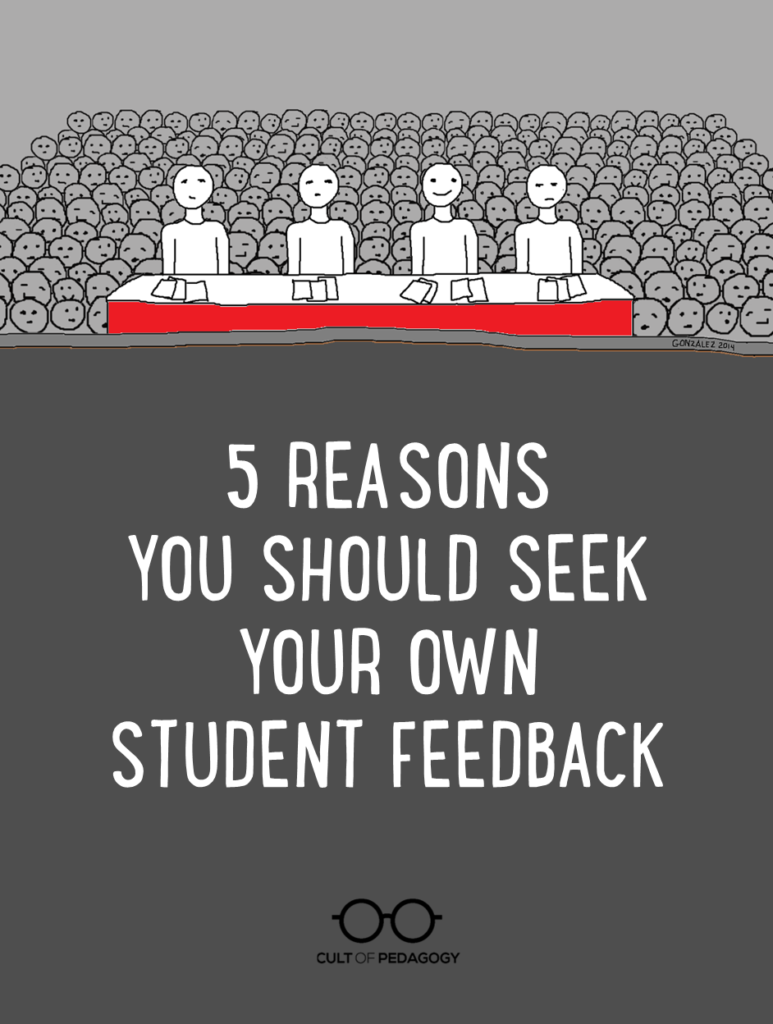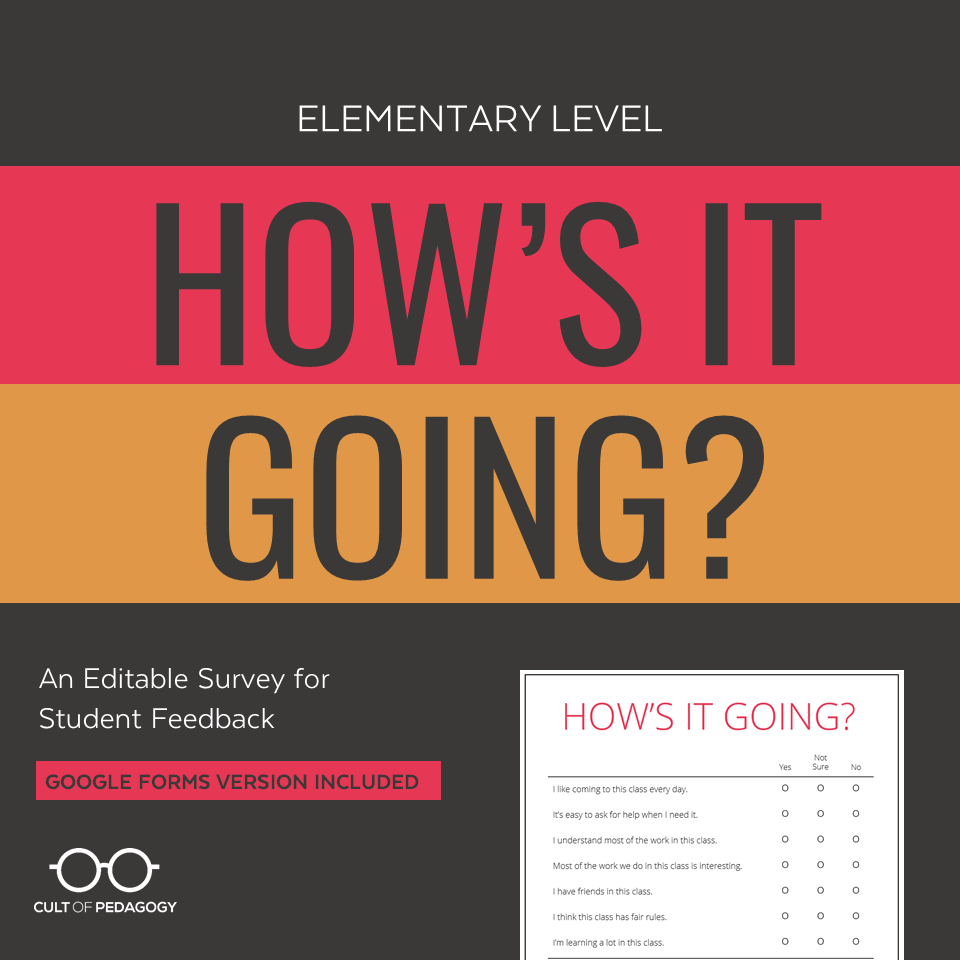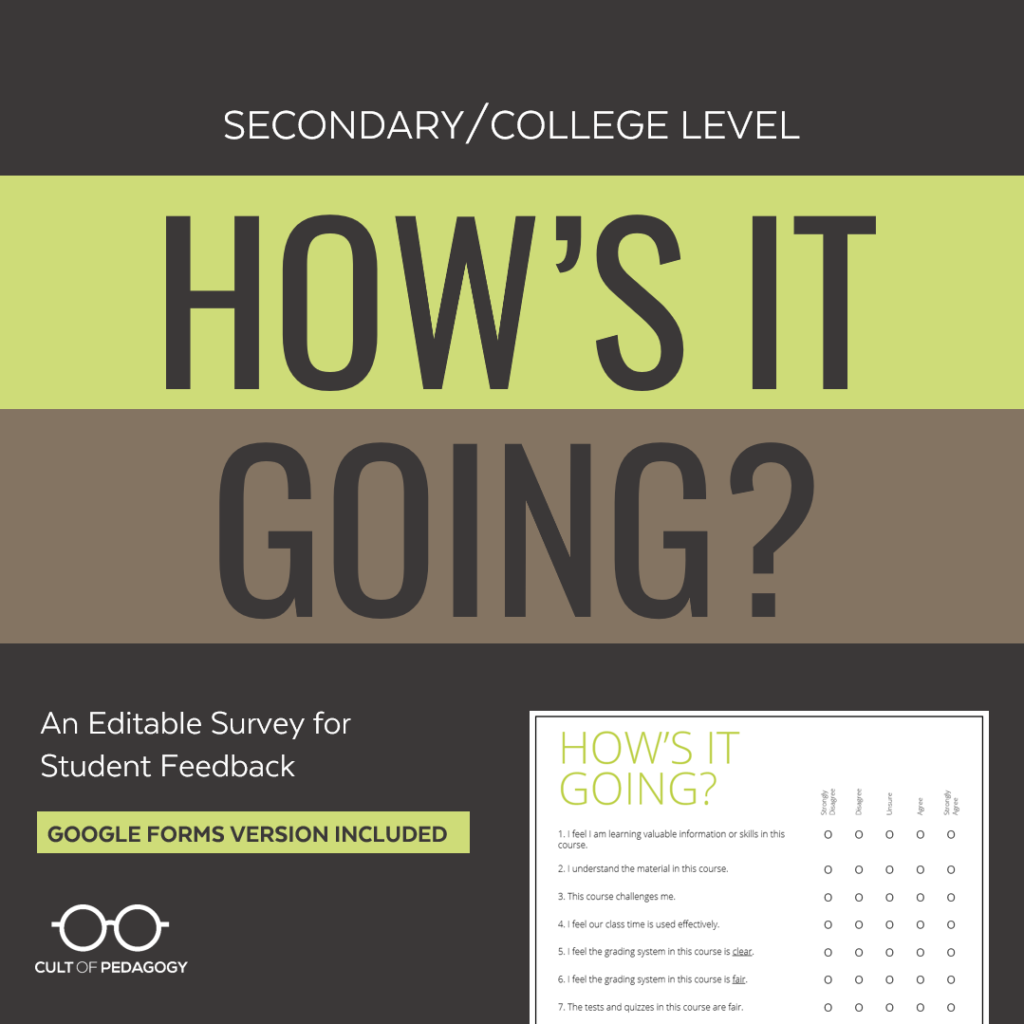5 Reasons You Should Seek Your OWN Student Feedback
Yes, it’s scary. Yes, it’s easy to assume you already know what students think about your class, how well they’re handling the workload, what activities they like the most. Yes, it’s possible you know best. Still.
If you’ve never asked students for serious, honest feedback, you’re missing something. If you ask the right questions and give students the time and encouragement to supply quality answers, student feedback can benefit you in so many ways.
The Benefits
1. Increasing Student Engagement
By finding out what learning activities students like the most and least about your class, you’ll get better at designing lessons that really engage them. Of course, your job is not to entertain your students 24/7, but if some methods of delivery are better received than others, then they’re likely to result in greater learning gains as well.
2. Preventive Discipline
Learning more about each student’s experience in your class can go a long way toward improving the relationship you have with them. And that can go a long way toward improving classroom management.
3. Differentiation
Grades and test scores don’t tell the whole story. A student who is getting excellent grades might be accomplishing that only with tremendous effort and hours of work at home. Conversely, a student who consistently turns in mediocre work might actually want more of a challenge. By asking students how well the work fits their abilities, you can adjust your instruction to better meet their needs.
4. Bullying Prevention
When students are given an opportunity to share their feelings about your class, they might also include information about students who harass them, or each other. If a student says he hates coming to your class every day, the reason might have more to do with his peers than with anything you’re doing. Gathering student feedback is the first step toward discovering the things you don’t know about your own classroom.
5. Self-Preservation
Many school systems are implementing teacher evaluation programs that include student feedback. And at the college level, student evaluations can significantly impact a professor’s promotion and tenure. Instead of waiting for the “official” forms to be distributed to students, get ahead of the curve by asking for similar feedback early, while there’s still time to troubleshoot.
Gathering Student Feedback, Step-by-Step
Start by asking good questions.
Create a written survey you distribute to students. Even if you teach online, you can distribute forms electronically. Here are some questions that should be included:
- Is the work in this class too hard or too easy for you?
- Do you feel our tests and quizzes are fair?
- How easy is it to approach me with questions or concerns?
- Do you feel our class time is used wisely?
- What do you like most about this class?
- What do you like least?
- What else do you think I should know?
That last question might seem like a throw-away, but it can elicit some of the most powerful and significant information you’ll get. Some students will use it to tell you about a problem they’re having with a classmate. Others will tell you that the handle on the class supply drawer is broken. You just never know what you’re going to get, so be sure to add an open-ended question like this to your survey.
Next, create optimal conditions for quality feedback.
- Distribute the survey at the right time and place. What worked best for me was to set aside 5 to 10 minutes at the end of a class period and have students do it then, rather than having them take it home.
- Talk to students ahead of time about the purpose of the survey and your desire to hear their true feelings. Give them examples of “mean” feedback (insulting another person) and “constructive” feedback (describing your own experience). Assure them that if they tell you something critical about your class or your teaching, you will not give them a bad grade or punish them in return.
- Make sure the room stays quiet and that students keep their responses as private as they would with a test.
- Decide ahead of time if you want students to put their names on their surveys: Anonymity will often get you more honest responses, but without names, it’s harder to do much follow-up work on them. I would tell my students that they could leave their names off if that made them more comfortable, but that I would be able to be a better teacher to them personally if I knew what their responses were. Most of the time, students chose to add their names.
Finally, ACT on the feedback.
Gathering information is useless if you do nothing with it. Here are some ways you can respond to student feedback:
- Talk. Then talk some more. Written feedback should be considered the first step. Once you’ve read the forms, follow up with individual students about their comments, and talk to the whole class about what you plan to do in response to what you learned. A few weeks later, check back with students to see if the changes are working for them.
- Look for patterns. A complaint from one student is worth noting, but fifty million Elvis fans can’t be wrong. Do many students say they don’t like silent reading? Do seventeen kids mention “rug time” as a problem? Even if it’s something you want to keep doing, a whole-class discussion can help you figure out ways to improve it.
- Dig into the mysteries. Students may put cryptic things on their surveys that are just the tip of the iceberg. If there’s anything on the form you don’t understand, don’t brush it off. Pull the student aside and ask her about it.
- Solve the easy problems. One of the best things about getting this feedback is that it can alert you to a problem that’s easy to fix. If a student mentions that the draft from the window bothers her, just move her. There. You just made the rest of the school year better for that kid.
- Watch your ego. Reading even a little bit of negative feedback is no fun for anyone, so be aware that your first reaction to criticism will probably be defensive. That’s natural, but it won’t solve the problem. Remind yourself that the student took a risk by telling you, so take the problem seriously and resolve to calmly and constructively find ways to solve it.
- Notice the positives. If the criticisms are getting you down, go back through and notice all the good things students said — those things matter. Figure out what you’re doing right, then do more of it.
A Tool You Can Use Right Now
If you’d like something ready-made for gathering student feedback, here’s a form you can use today: the “How’s It Going?” Form. You can use it any time of year to get a quick snapshot for how students are experiencing your class. The form comes in two versions: One for elementary students and the other for secondary and college-level students. With each, you’ll also get an editable form so you can add to or adjust the questions for your own needs, and a link to a Google Forms option if you want to conduct the survey digitally. Both forms are available in my Teachers Pay Teachers store:
The “How’s It Going?” Form
Elementary Level
The “How’s It Going?” Form
Secondary/College Level


